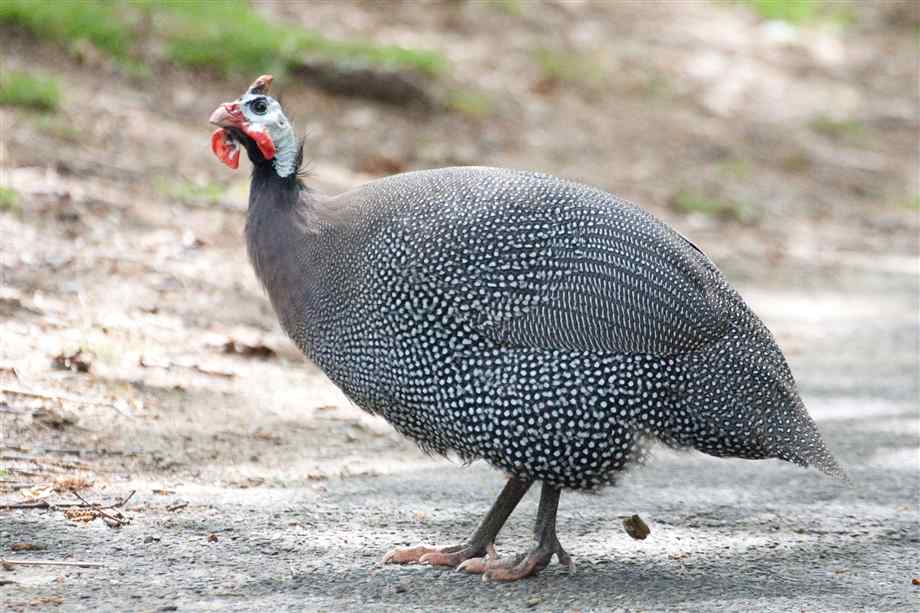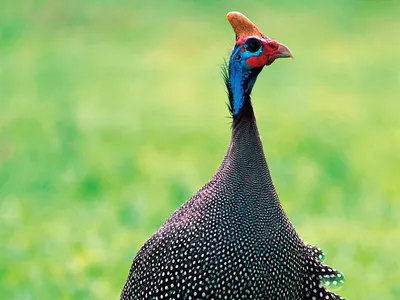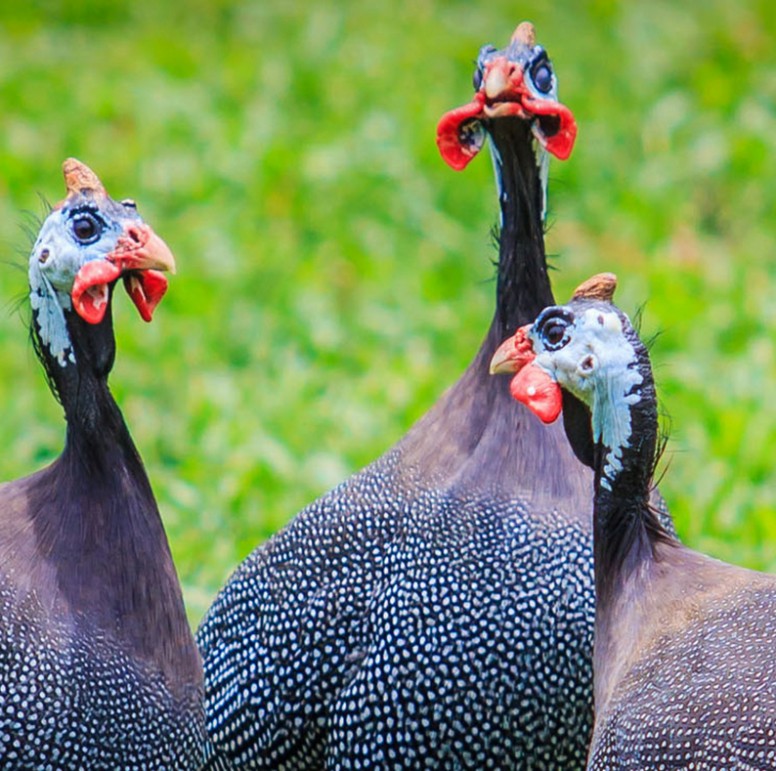Guinea Fowl
They are given the name by the English. They mature in a period of 8 months, weighing around 2.5 Kg. There lay around 120 eggs a year which can be hatched using ordinary hens as well as incubators.Guinea Fowls are predominantly black with small white polka dots. They are known for their ability to ward off strangers just like good watch dogs. They also keep strangers, snakes and rats from the premises. They are able to eat weeds without destroying crops. These birds are from western Africa.


